Croatian Government Adopts Measures for Development of Islands and Tourism
On Friday, October 26 2018, the Croatian Government held a special session on the island of Hvar, where it adopted a series of important measures for islands and tourism.
The Croatian Government submitted to parliament the final draft of the Law on Islands, whose aim is to create the conditions for the demographic and economic revitalisation of islands and their self-sustainability and self-sufficiency. “The goals of the new law are to manage the island policy and sustainable development of islands, improve the living conditions and achieve demographic and economic revitalisation, self-sustainability and self-sufficiency on what we call smart islands,” said Minister of Regional Development and EU Funds Gabrijela Žalac, pointing out the importance of projects which can be funded from various sources, including EU funds.
The smart island is an island which, through the use of appropriate tools and innovative solutions, is developing environmentally-friendly and in a socially, technologically and economically sustainable way, based on the circular economy and with an increasing self-sufficiency and resistance to climate change.
The minister said that the key provisions of the new law were the introduction of the concept of “islanders” and “islandness,” and a new model categorising islands, as well as a new approach to the strategic planning of island development.
One of the new provision is the introduction of island coordinators whose activities will be funded by the Ministry of Regional Development through county development agencies. They will ensure joint preparation and implementation of projects on islands, the minister said. The island coordinators will be tasked with organising, launching and coordinating plans and projects important for the sustainable development of islands.
The use of an existing island card will be extended to ensure that all rights are coordinated from one place. The law also encompasses measures for subsidising public sea and road transport, the free crossing of bridges, and equalizing the prices of water on land and on the islands for households and businesses.
Žalac also pointed out measures for encouraging social entrepreneurship which can also be financed from European funds, for removing waste from the island, as well as for solving the current problems with wild animals and the removal of invasive foreign species.
The new law, introduced after 20 years, defines an island as an area with developmental specificities and introduces the notion of “islandness” – a set of geographical, social, historical, economic and ecological specificities derived from being surrounded by the sea. The law allows for stronger involvement of all stakeholders in the development of islands, especially those at the local level, in adopting and suggesting island-oriented policies.
Introducing the law, Prime Minister Andrej Plenković said that the law would stimulate the demographic and economic revitalisation of islands.
Minister Žalac also submitted a report on the effects of the implementation of the current Law on Islands, saying that last year a total of 1.7 billion kuna was invested on the islands. Croatia has 1,244 islands (50 inhabited), which represent 5.8% of the land area, in seven coastal island counties with 59 local self-government units. The coastal sea covers 31,500 square kilometres.
Croatia and Finland are the only two European countries which have a law on islands. Given the constitutional definition of islands as an area of special interest, the state co-finances, among other things, maritime links between the islands and the mainland and links between islands, their water supply and transport infrastructure. “Overall, from 2004 to 2017, over 21.8 billion kuna was invested in the islands," said Žalac. The state has invested the most in the economy and measures that contribute to the development of the economy, more than five billion kuna, followed by traffic connections and infrastructure.
Also on Friday, the government sent to the parliament three tourist laws – on tourist boards, on tourist board membership fees, and tourist tax.
Tourism Minister Gari Cappelli said that the main objective of the new Law on Tourist Boards and Promotion of Croatian Tourism is the establishment of a new system of tourist boards, based on the principles of destination management, which significantly changes the goals of boards at all levels. “We are encouraging tourist boards to merge, as well as to establish joint tourist boards for multiple units of local and regional self-government,” Cappelli said.
According to the proposal, the tourist board system will consist of local tourist boards, regional tourist boards, the Zagreb City Tourist Board and the Croatian Tourist Board (HTZ).
Tourism Minister said that the new law also introduces a significantly higher degree of transparency in the activities of tourist boards and better promotion of destination tourist products. One of the provisions of the new law is the possibility for the president of a local or regional tourist board to be appointed by the relevant mayor or prefect. Until now, mayors and prefects were automatically named presidents of their tourist boards.
It is also proposed to limit the share of gross employee wage costs to 30 percent of the total tourist board revenues. The current practice has shown that the costs of gross salaries of employees in some tourist boards amounted to up as much as 90 percent of total revenues.
Presenting the proposal of a new law on tourist board membership fees, Cappelli emphasized that the law would reduce the administrative burden and costs to businesses, and would bring about a fairer model for allocating funds. The new law reduces the number of payers of tourist board membership fees. As many as 21 business sectors will no longer have to pay the fees, while 12 sectors will see their fees reduced.
According to the proposal, for example, tourist membership fees would no longer be paid by businesses in sectors such as maritime and coastal freight transport, water transport services, accounting, bookkeeping and auditing services, and photographic businesses, translation and interpreter services, artists, fitness centres and other sports facilities, hairdressers and beauty salons, etc. However, according to the new proposal, banks would have to pay tourist board membership fees, given that they see an increase in income during the tourist season.
The law also reduces the number of rates for calculating the membership fees from 28 to 5. Private renters and family farms will pay the fee in a lump sum and will be able to choose whether to do it in one or three annual instalments.
The government also adopted the law on tourist tax, which changes the “sojourn tax” into the “tourist tax.” As one of the most important provisions of the new law, Cappelli cited decentralisation. So far, the government's regulations have imposed the amount of the sojourn tax. The tourist tax will now be determined by the county assemblies.
Cappelli also pointed out that more funds would be allocated to regional self-government units, which will get five percent more money. According to the proposed law, from the funds collected from the tourist tax, 2.5 percent will be allocated to a special HTZ account for development projects and programmes in underdeveloped tourism areas, while two percent will go to a special HTZ account for projects and programmes of united tourist boards. Of the remaining funds, 65% will go to local tourist boards, 30% of which will be allocated to the municipality or town in which the local tourist community is located, 15% to the regional tourist board and 20% to the HTZ.
After the session, a series of agreements important for islands were signed. Numerous contracts and decisions on financing island projects were also signed. Prime Minister Andrej Plenković pointed out that “the total value of these projects is about 5.6 billion kuna, and some of these projects will be implemented over the next ten years.”
The Ministry of Maritime Affairs, Transport and Infrastructure signed contracts for the construction of a ferry dock in the port of Kaprije and the extension of the external dock in Sućuraj, as well as an agreement on the extension of the port at Unije.
The Ministry of Regional Development and EU Funds signed an agreement on grants for Lastovo Islands Nature Park, historical gardens of the Dubrovnik area, and the cultural route in Zadar County.
The Ministry of State Property signed agreements for the use of the fortress of St. George by the Town of Vis, for the use of two apartments in Komiža by the Town of Komiža, on giving use of a building in Postira for a retirement home, and for giving state-owned property to the Municipality of Tribunj.
The Ministry of Administration signed agreements on the introduction of e-registry in Supetar, Stari Grad, Jelsa, Bol, Sućuraj, Sutivan, Okrug, Šolta.
The Ministry of Science and Education signed an agreement on providing a grant to the University of Split.
The Ministry of Agriculture announced four decisions approving projects from investments in wineries and marketing for Vrbnik, Blato 1902, Madirazza and Dingač-Skaramuča.
The Ministry of Construction and Physical Planning signed grant agreements on the energy restoration of a sports facility in Rab, for energy restoration of the Vela Luka retirement home, for the energy restoration of primary and secondary schools in Vis, and for the energy restoration of a local kindergarten.
The Ministry of Administration announced that the Town of Hvar can use the proposed coat of arms and flag.
To follow the latest from the Croatian Government and politics in general, follow the Total Croatia News Politics page.
Croatia Travel Trends for USA Market: Al Merschen Presentation on Hvar
Where does Croatia travel fit in American priorities and interest? An in-depth analysis at Days of Croatian Tourism on Hvar on October 25, 2018.
Among the many fascinating discussions and panels held at the 2018 Days of Croatian Tourism on Hvar this week was an in-depth look at the perception of Croatia as a tourist destination with the American market. Al Merschen of Myriad Marketing provided a comprehensive overview of a targeted survey of Americans interested in travel to Croatia. In order to give the research more relevance to Croatia, the survey target group was confined to households with an annual income of more than $100,000 who had taken a holiday in the previous 12 months to a destination further than Canada, Mexico or the Caribbean.
Setting the Croatia Travel Context for the USA Market.
While the focus of the presentation was on Croatia, Merschen gave some great insights into the trends of American tourists, which was an interesting overview into the trends of tourism promotion in this increasingly digital age. Apologies in advance for the quality of some of the photos - I was sat a little further back than I would have liked in Hvar's historic Arsenal, but I will explain all in the text below each slide.
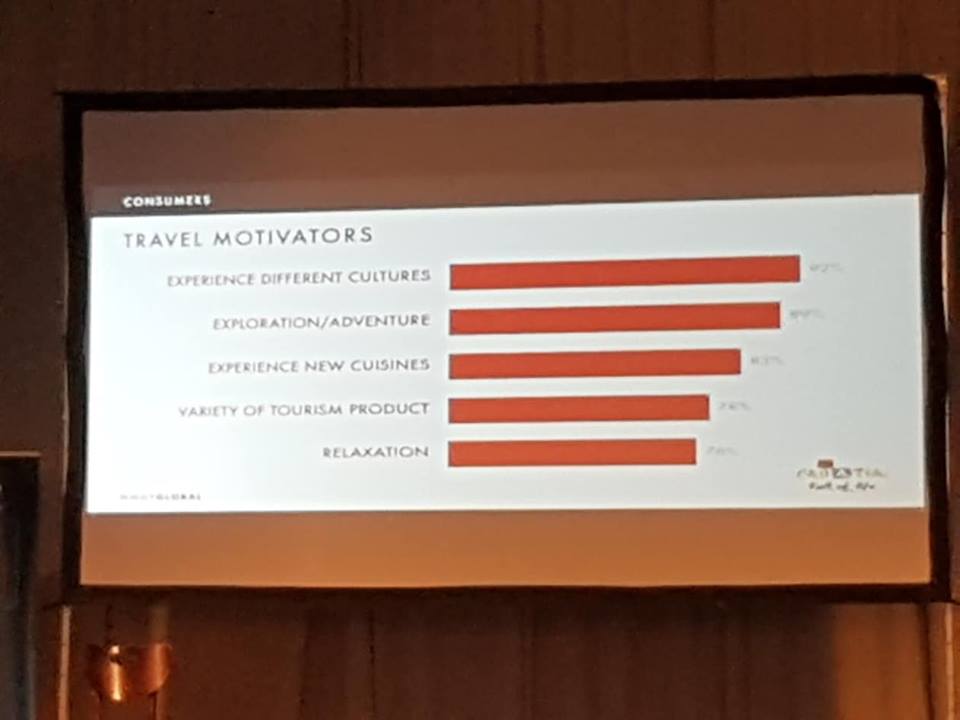
The top five reasons for travelling all play to Croatia's strengths - experiencing different cultures, exploration/adventure, experiencing new cuisines, variety of tourism product, and relaxation, all of which Croatia does with aplomb.
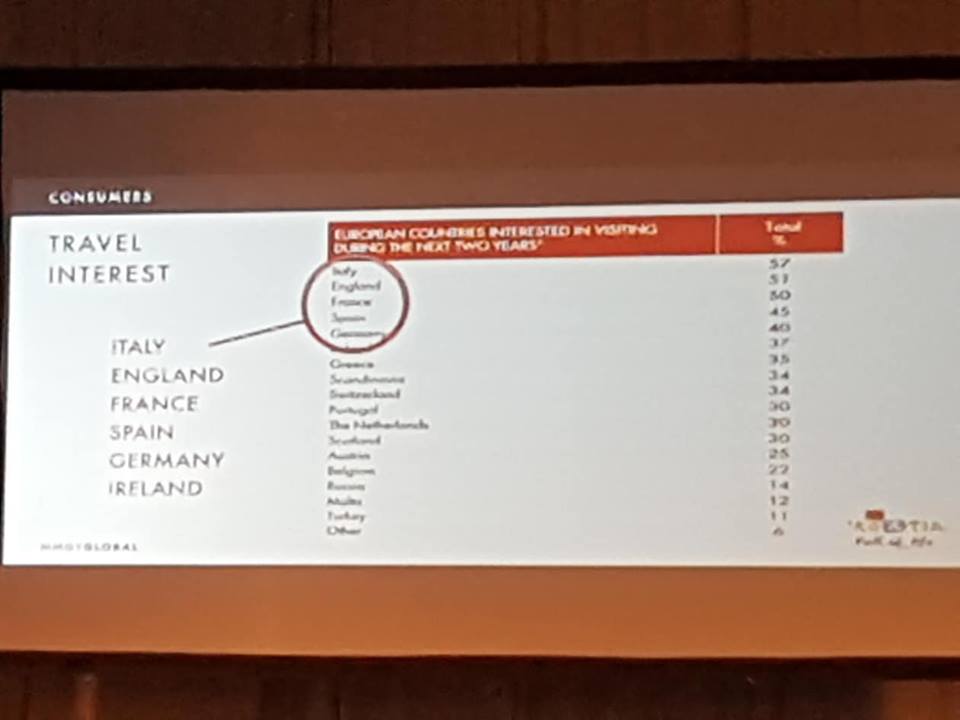
The top six countries of interest in Europe are Italy, England, France, Spain, Germany and Ireland. As Merschen pointed out, these are all countries with sizable diaspora (Croatia has around 1.2 million diaspora in the United States) - a target market in addition to regular American tourists.

The most important methods of searching for destination ideas and information are travel review websites, online search, destination websites and recommendations for friends and family - good news for our little website, which gets 60% of traffic from Google Search and has a number of destination websites.
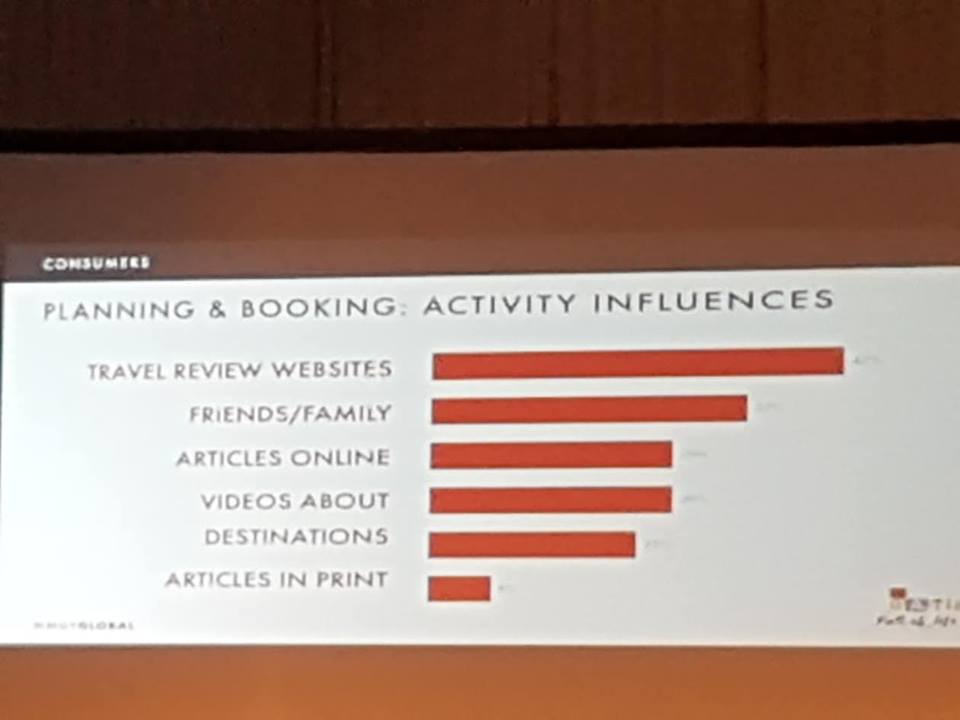
The declining interest of print media is there for all to see, as is the power of travel review sites. Interestingly, Merschen explained that while the majority of people travelling now are millennials, the majority of those leaving comments on review sites are baby boomers, so children are listening to their parents after all, at least in terms of travel recommendations...
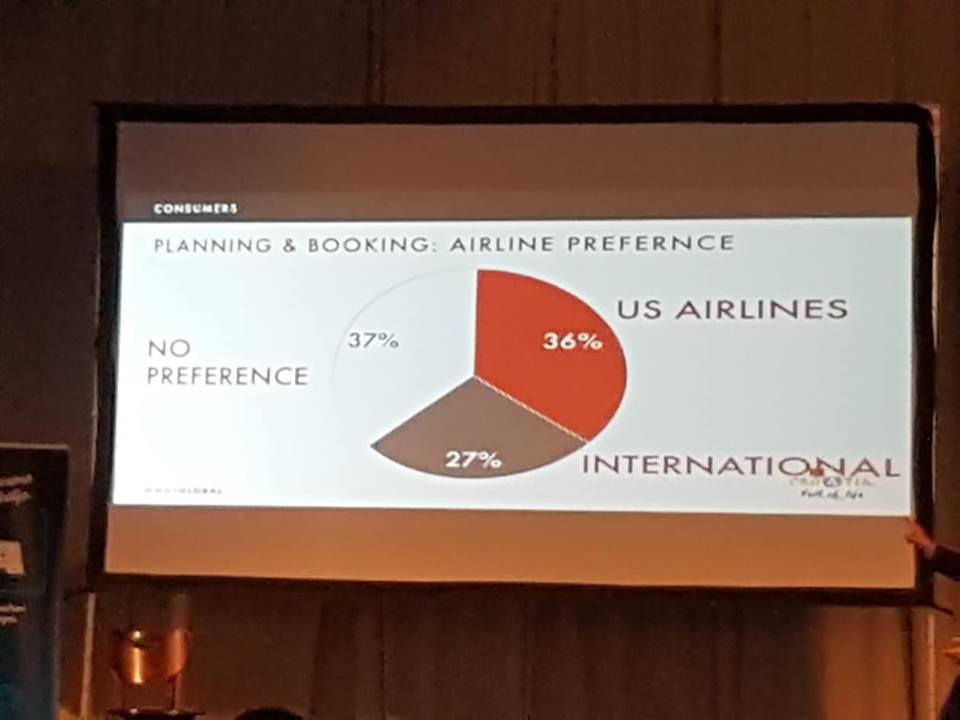
A big surprise for me in this age of terror was that almost two-thirds of American tourists had no problem flying with a non-US airline.
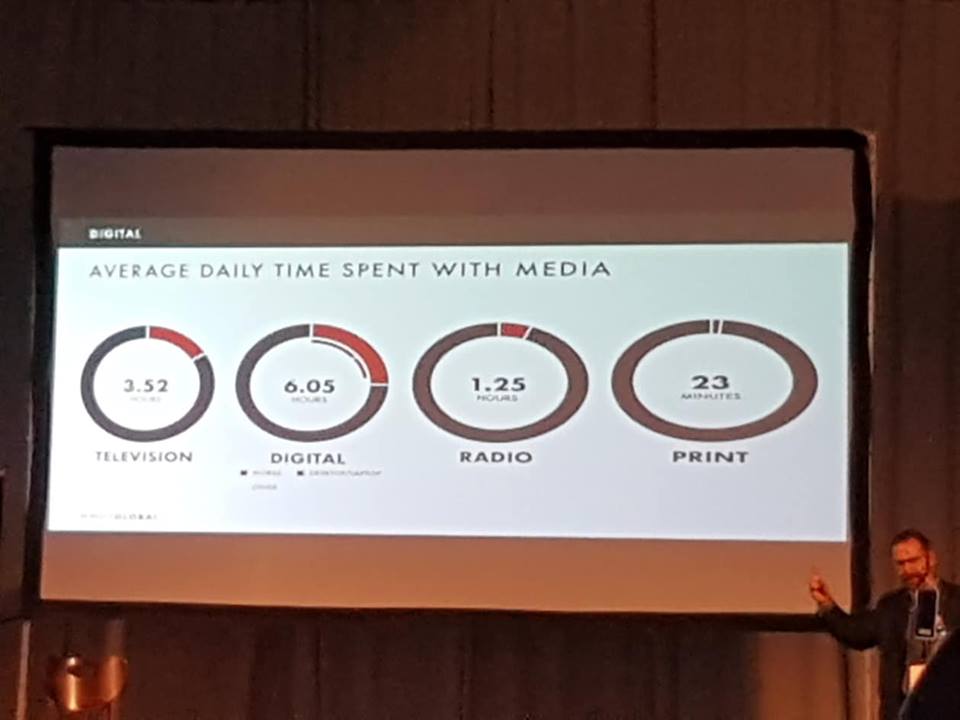
And if there was any doubt in where the world is going in terms of seeking information, this slide says it all - average daily time spent with media - more than 6 hours online, just 23 minutes with print.

Welcome to the world of the power of the mobile.
Croatia Travel Study - Results of Myriad Marketing Survey of USA Market.

Moving to the research into the Croatian market, there was some very encouraging information, as well as some opportunities to build on. Almst half surveyed had an interest in Croatia, with some 23% Croatia travel veterans.

The biggest interest group are millennials. And before you think cheap backpackers, the oldest millennials these days are 37.
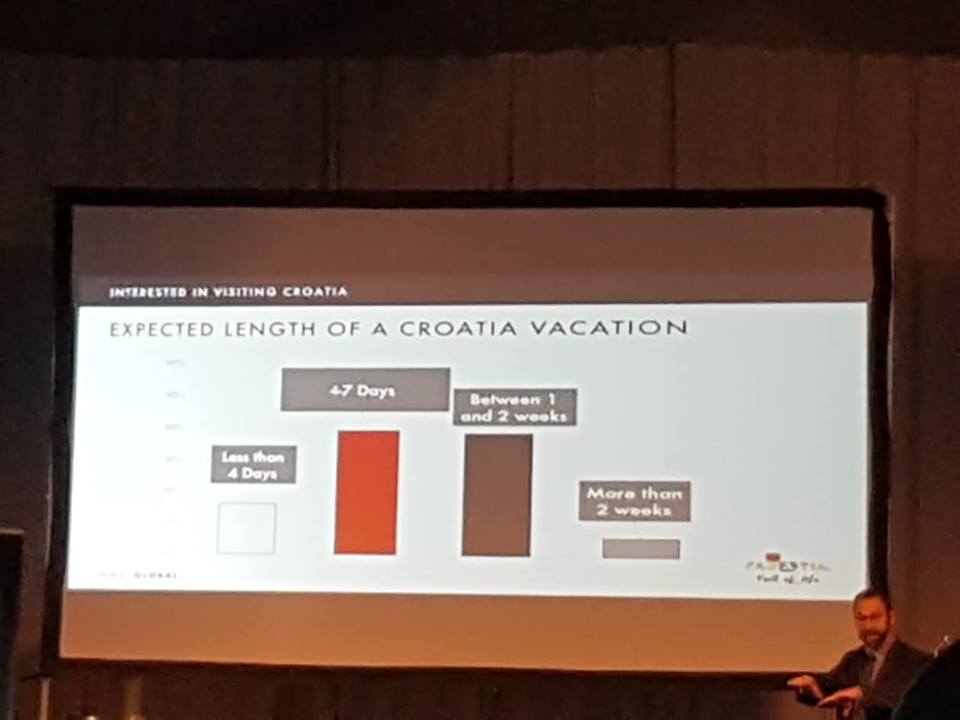
More good news for Croatia in the length of stay survey - the vast majority from 4-7 days and 1-2 weeks.
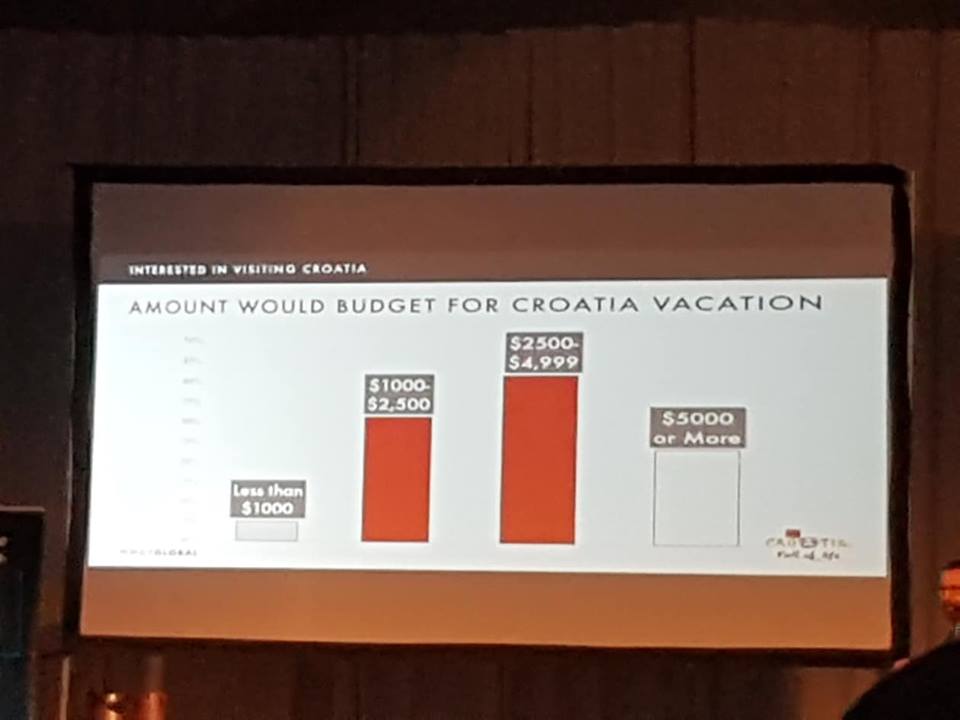
And some of the best news of all - Americans are very prepared to spend, spend, spend - a much higher vacation spend on average than Croatia is currently enjoying.
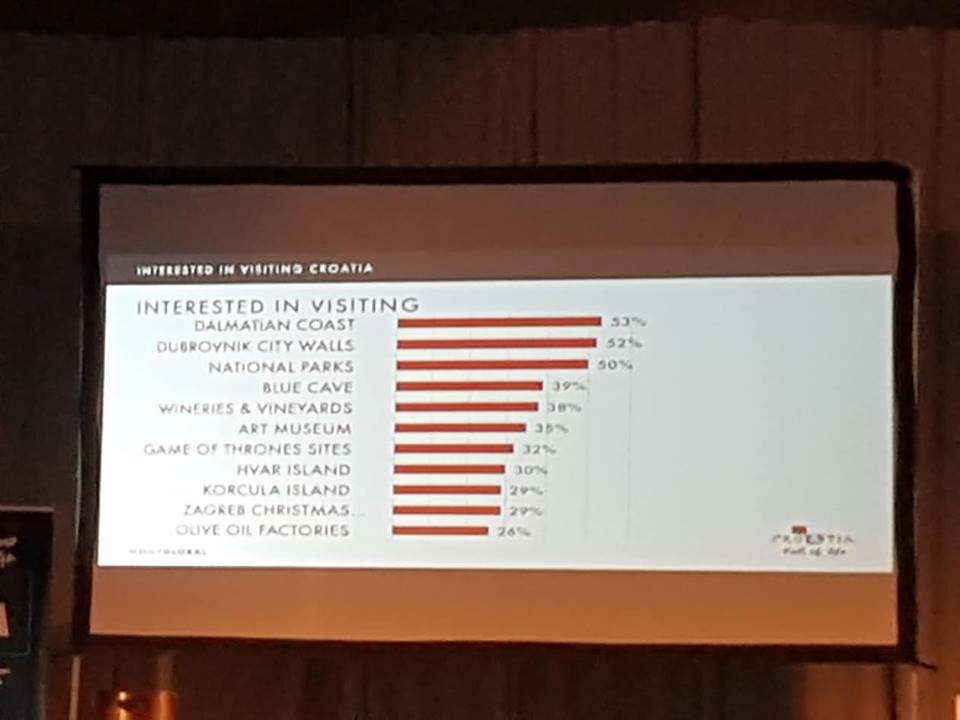
The most interesting places to visit threw up some surprises, and at least one huge unexploited opportunity. Interest in wine and wineries is above Game of Thrones. And yet Croatia does not have an official website about wine to help address this obvious need. TCN started a dedicated website about wine, Total Croatia Wine, to meet this need. Perhaps it is time to make a wine road for Damatia too...

Food tours and wine tastings figure high on the list of things to do. Croatia has so much potential as a top gourmet destination - potential immortalised by the late Anthony Bourdain in his No Reservations show about Croatia six years ago.
Croatia has the potential to be on a par with France, Italy and Spain as a gourmet tourism destination, but it has some way to go to reach that level. But the potential - and the demand - is there.

Among the best - and most surprising - news was that some 85% of those surveyed did not see the need to change planes to reach Croatia as a barrier. Although the first direct flights from the USA to Dubrovnik after the war will commence next summer, the lack of direct flights is perceived as being a major obstacle to North American tourism to Croatia. It appears that it is not.

And for those not interested in Croatia, the reasons for lack of interest in Croatia travel were also encouraging. Nothing specific or negative in the key reasons - no destination suits everyone.

Croatia has a major appeal to exploit - its attraction as a different cultural experience.
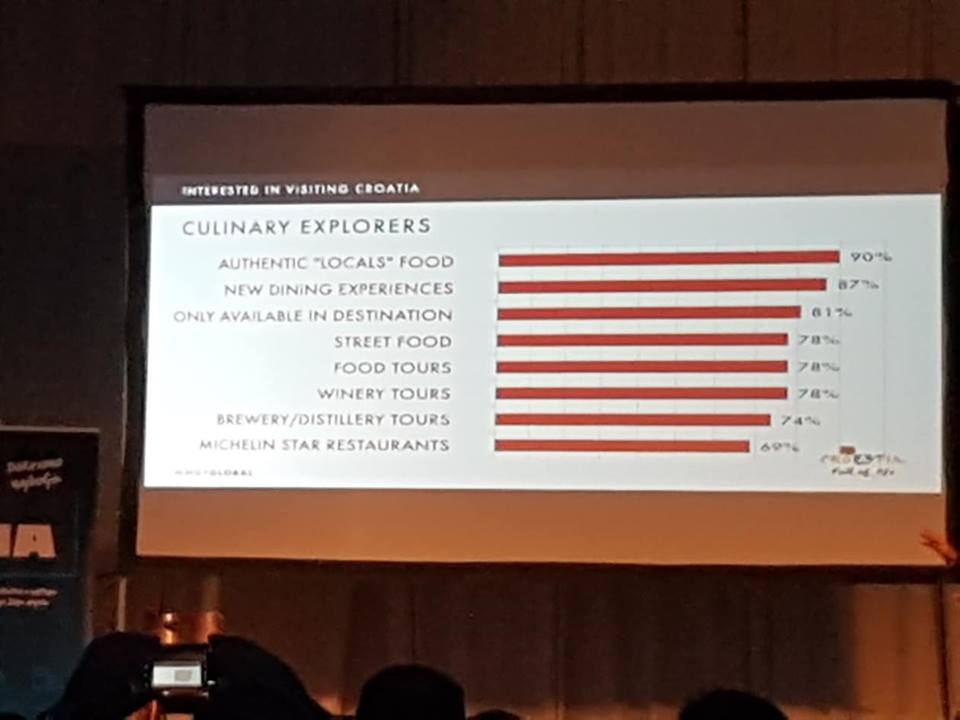
A closer look at the interest in gourmet tourism also reveals interesting results - who needs Michelin-star restaurants when you can have local and street food experiences?
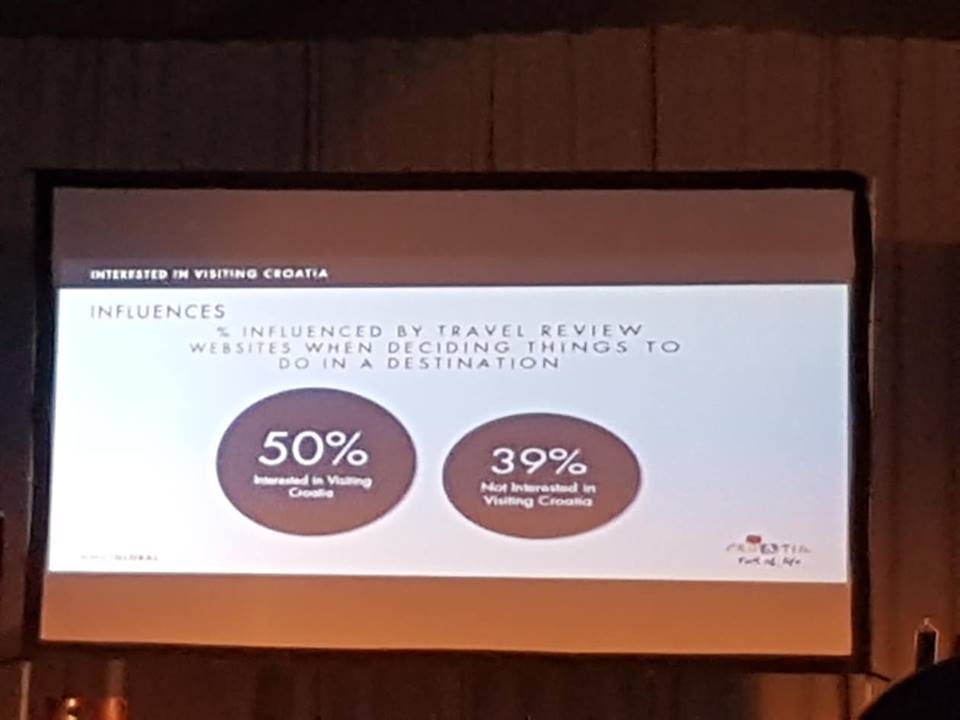
Those travel review websites have a major pull.
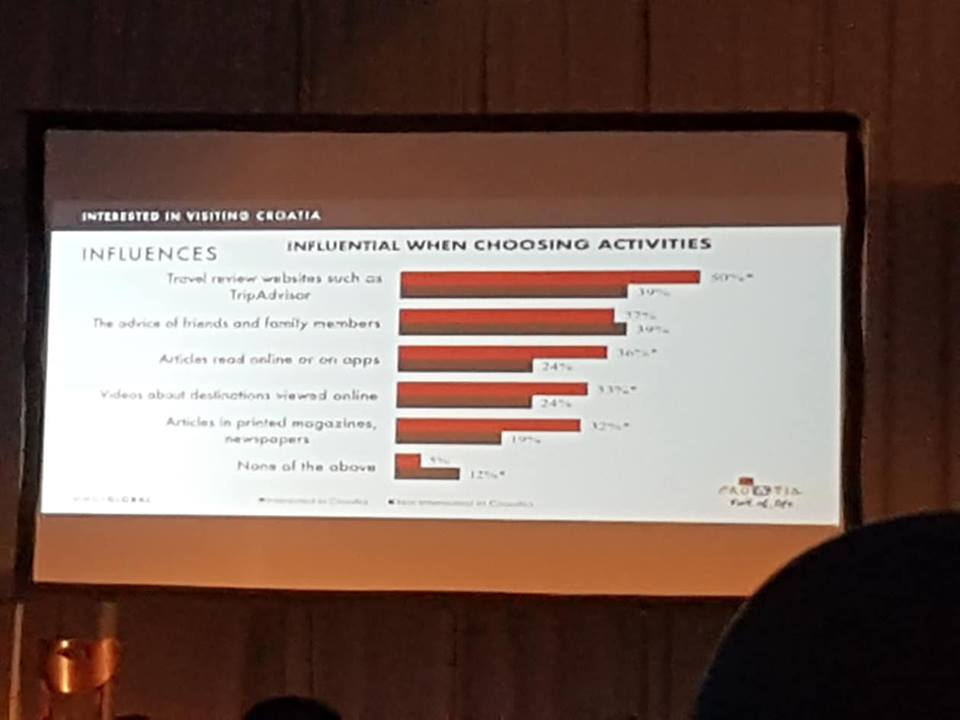
A lot more so than recommendations from friends and family.

And an interesting statistic for those planning for next season - the largest number of people researching their Croatia travel do so 6 months before arriving.

The power of social media.
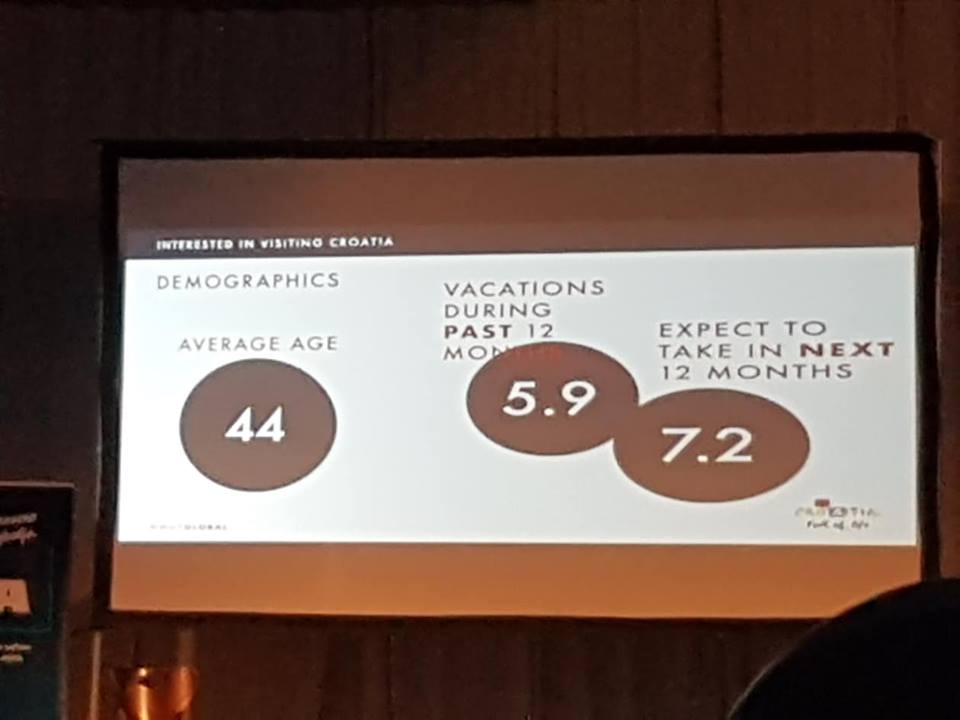
The average age of people interested in visiting Croatia was a lot higher than I imagined, and things must be good in the States, as more holidays are envsiaged next year than last.

A profile of the people surveyed interested in Croatia travel from the United States.

And, given the distance involved, a rather surprising number of respondents who are interested in Croatia travel with young children and/or teenagers - good news for Croatian tourism providers in the high-quality family tourism segment.
Plenty of great information from Al Merschen's presentation, and the news is very, very good and the (that word we use in Croatian tourism so much) potential is huge. Can it be turned into bigger tourism numbers of high-spending American guests?
Many thanks to Al Merschen for such a thought-provoking presentation. You can learn more about Myriad Marketing here.
Croatian Government Meets on Hvar to Discuss Island Development
ZAGREB, October 26, 2018 - Today's cabinet meeting of the Croatian Government on the island of Hvar has reference to the development of islands, and "a hand has been extended" to the island populations through a bill on islands and three tourism-related bills, since a quarter of tourism revenues comes from the islands, Prime Minister Andrej Plenković said after the meeting in the town of Hvar on Friday.
The meeting focused on the development of the Adriatic islands and summed up the outcome of the country's most successful tourist season so far.
The government also signed several projects and decisions on financing the projects on the islands, with an aggregate amount of 5.6 billion kuna.
The prime minister said that some of the projects related to the development of the electricity supply system in the next 10 years.
The government sent to parliament a bill on Thursday paving the way for the demographic and economic revitalisation of the Adriatic islands and their self-sustainability and self-sufficiency. "The purpose of the new bill is to manage island policy and sustainable island development, raise living standards, and ensure demographic and economic revitalisation, self-sustainability and self-sufficiency based on the 'smart islands' programme," Regional Development and EU Funds Minister Gabrijela Žalac said at a cabinet meeting in Hvar.
The “smart islands” programme provides for the use of appropriate tools and innovative solutions to develop the islands in an environmentally, socially, technologically and economically viable way, building a circular economy and increasing self-sufficiency and resistance to climate change.
The bill envisages the appointment of island coordinators to initiate and coordinate plans and projects important for the sustainable development of the islands. It also proposes subsidies for public maritime and road transport, toll-free passage across bridges, and the same water rates for households and businesses on the mainland and the islands.
Reporting on the implementation of the existing law on the islands last year, Žalac said that a total of 1.7 billion kuna had been invested in the islands by different government departments. From 2004 to 2017, this figure had reached 21.8 billion kuna, she added.
Croatia has 1,244 islands, 50 of which are inhabited, constituting 5.8 percent of its land territory. According to a 2011 census, 132,756 people lived on the islands and the southern peninsula of Pelješac.
Four of the islands – Krk, Pag, Vir and Čiovo – are connected to the mainland by bridge, and their population increased by 10.3 percent from 2001 to 42,245 in 2011. All other inhabited islands had a total population of 82,710, down 2.1 percent from 2001.
Croatia is the only EU member state, along with Finland, to have a law on islands, and given the constitutional designation of islands as areas of special interest, the government co-funds maritime connections between the islands and the mainland and between the islands themselves, as well as water supply and transport infrastructure.
Zagreb Named Best Destination at Days of Croatian Tourism 2018 on Hvar
Zagreb among the awards again.
Hvar Shines in Late October Hosting 'Days of Croatian Tourism'
October 25, 2018 - The movers and shakers (and one fat foreign blogger) from the Croatian tourism industry descended on the island of Hvar for this year's Days of Croatian Tourism gathering. Some thoughts on visiting the sunshine island in late October with up to 2,000 other delegates.
Hvar in the shoulder months of the tourist season has always been one of the jewels of tourism in Croatia. Come in peak season, and one may found the crowds and heat a little oppressive. Come in winter and there is little open as the locals take a well-earned rest. But from Easter to June, September to October, this most picturesque of destinations - a destination which truly has it all - shines, aided a little by that endless sunshine. October is such a good month to visit - there are a number of key events in the tourism calendar, as Hvar Town has worked to extend the season, and with much less tourists around and locals able to breathe after the stress of peak season, the town has a relaxed calm and can be explored at leisure.

But how would Hvar cope with the influx of up to 2,000 visitors for the 2018 Days of Croatian Tourism, the most important tourism industry gathering in the country, and one which this year was hosted by Hvar Town, which was celebrating 150 years of organised tourism in Europe?
I had never been to Days of Croatian Tourism before, and I have always been curious about the event. I had assumed it was mostly about self-congratulatory back-slapping, which is why I avoided it. But I was curious to see how Hvar would showcase itself, and so I applied for my press accreditation. And while the element of self-congratulation was strong, it was outweighed by the networking opportunities and insights into the Croatian tourism industry. TCN will be taking an in-depth look at Days of Croatian Tourism issues beyond the bright lights and awards in the coming days.
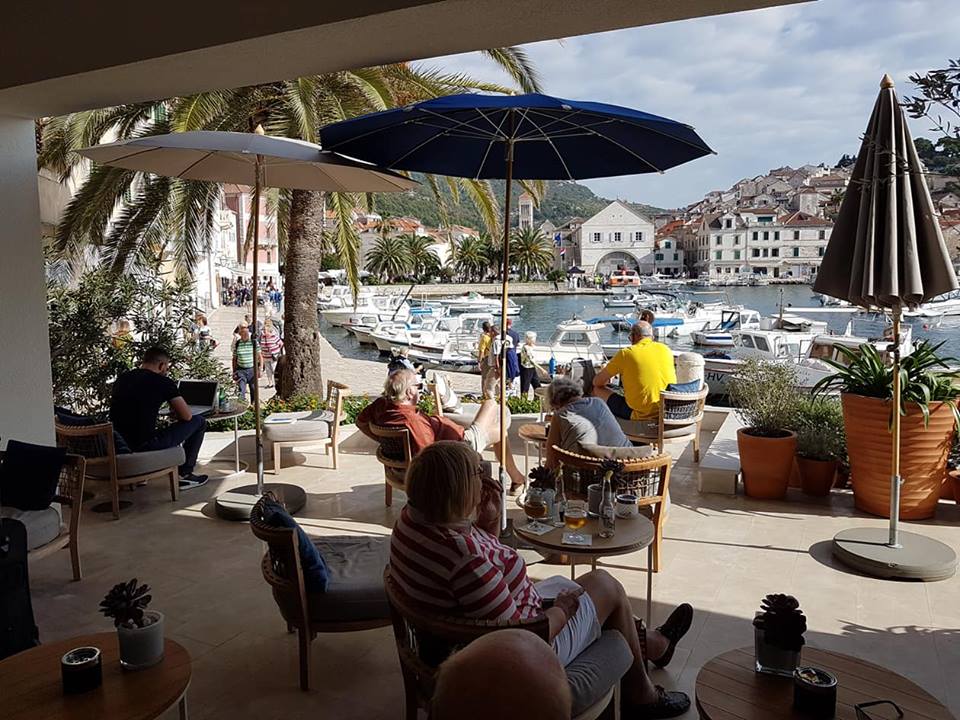
"But Hvar really is beautiful," remarked my Croatian colleague as he settled into his first coffer of the day at Hotel Adriana's newly revamped ground floor bar.
I like visiting Hvar with Croatians from the mainland. While I have my perspective as a foreigner who lived there for 13 years,
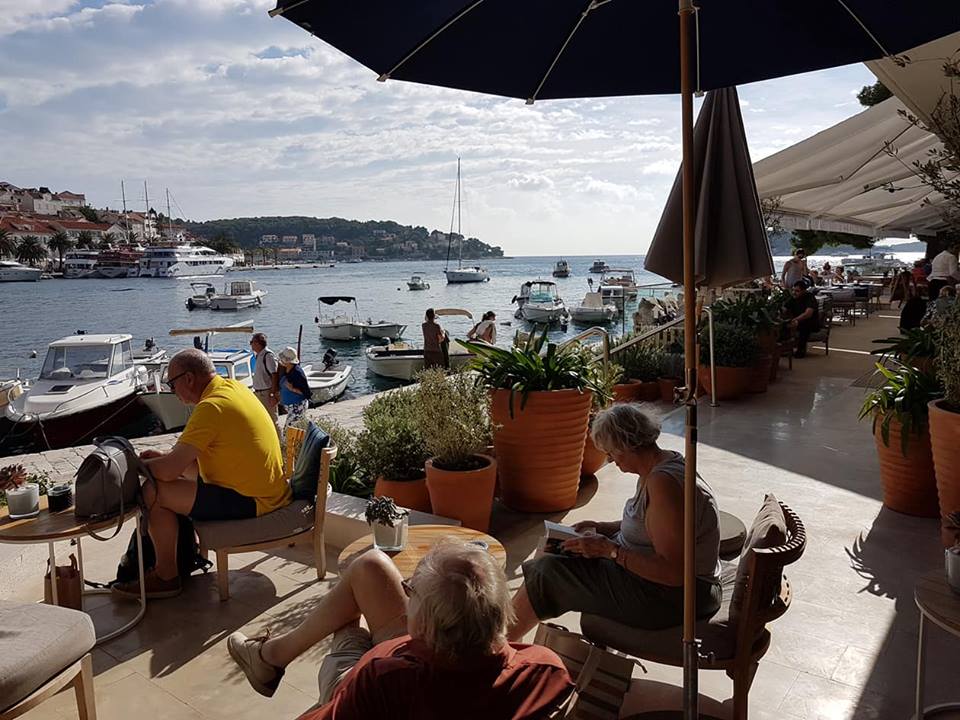
I love the ground floor of Hotel Adriana. While most people rave about the views fromTop Bar (which ARE fantastic), the ground floor is the best living room in the town, superb for people watching and total chilling. I once stayed at the hotel, and the buffet breakfast experience remains one of my favourite things to do in the town. Open from 07:00 to 11:00, the outdoor terrace is so close to the water that you can hear the waves lapping against the harbour wall. It is a superb place to unobtrusively observe the relaxed pace of life, and to watch the town waking up - the fishing boats, the early catamarans, the kayakers, the speedboat transfers and the super yachts. Each has its own pace and agenda. Different world existing in perfect fjaka harmony.
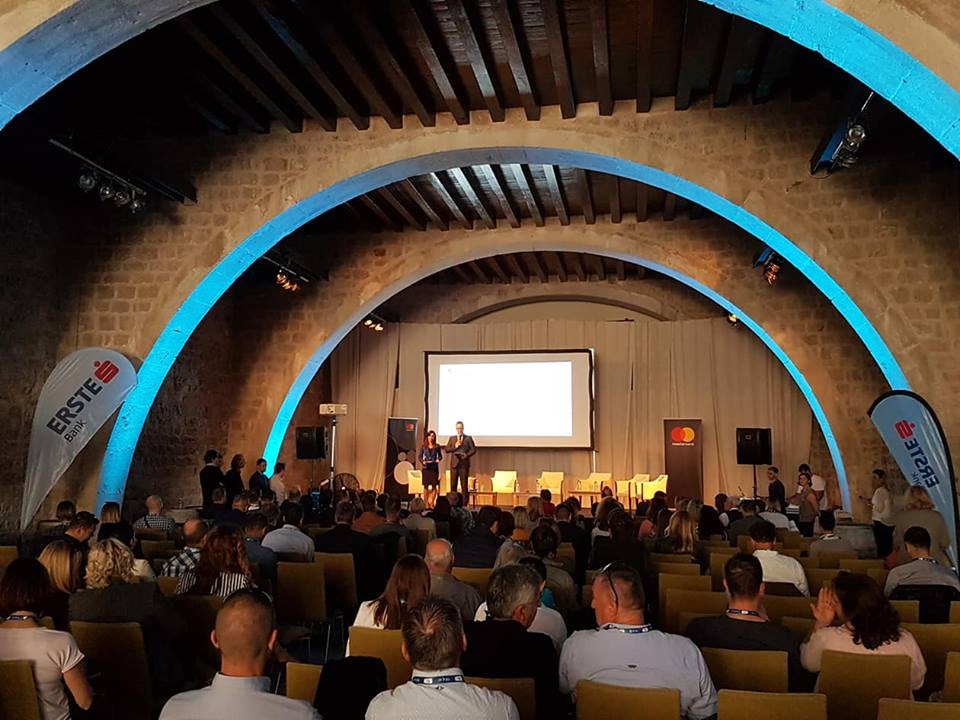
Hvar has a wealth of historic buildings, which have sadly not been put to the best use in recent years. The Austrian entrepreneur who created Hula Hula and took it to the top 50 beach bars in the world (in the days when Hula Hula was truly amazing) tried to get the local authorities to give him a concession to take the Arsenal, Veneranda and the Spanish Fortress under concession to build up Hvar as a premier European destination of culture, with high end events. HIs vision didn't get very far, but it good to see some of these venues are being used more creatively these days. And what fantastic locations they are. The first discussion panels took place in the Arsenal, on the corner of the main square. Above, the oldest public theatre in Europe, dating back to 1612, below, Roman ruins excavated a year ago. And the Arsenal itself - a magnificent welcome to Hvar.

Outside for a glimpse of those divine Hvar sunsets.
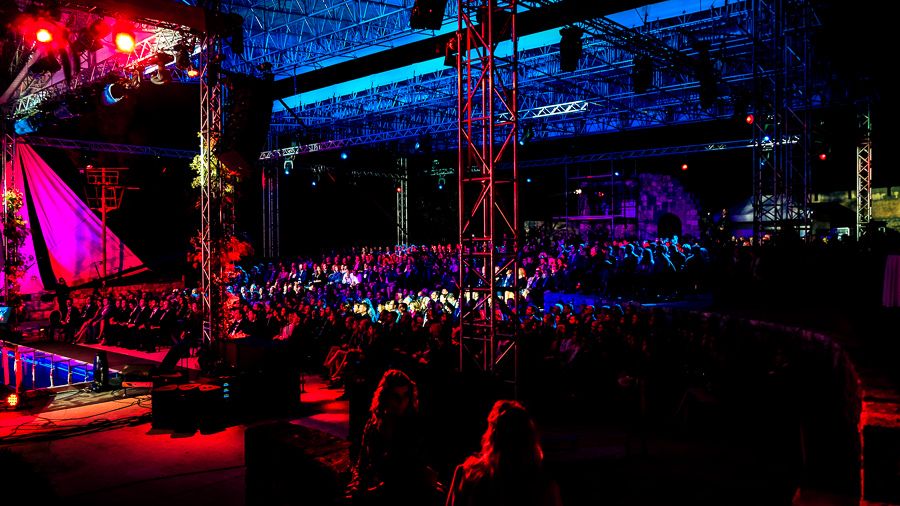
And then up to Veneranda for the awards ceremony. Seven years ago, Veneranda was the thumping nightclub where a certain young British prince fell into the nightclub swimming pool. The nightclub is no more, and these days Veneranda hosts a range of cultural events - a welcome upgrade in quality.
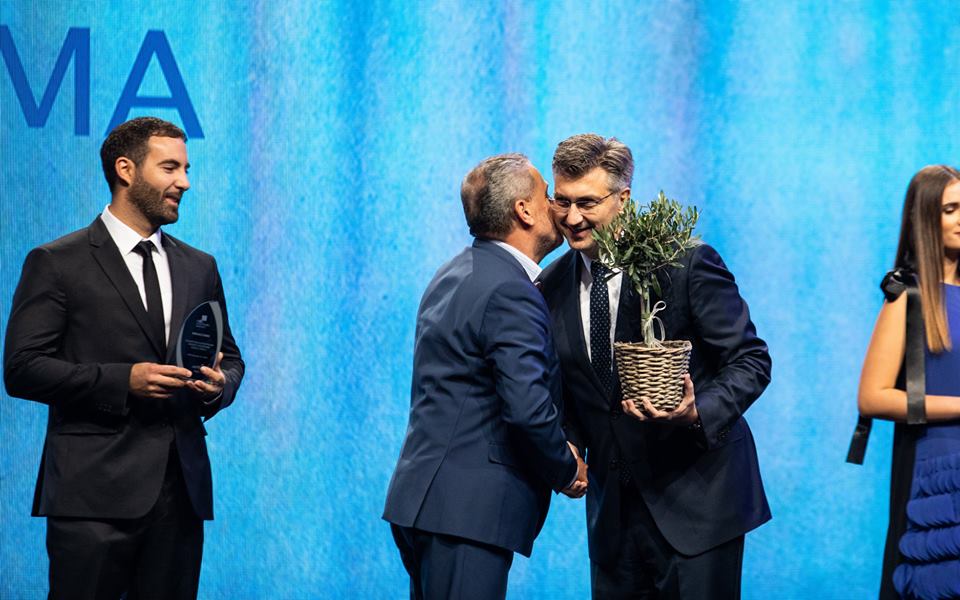
We will be covering the awards in a separate article, but the event is being followed today by the Croatian Government holding a special session, with a focus on development of the islands. Prime Minister Andrej Plenkovic was at last night's awards, and was on hand to present the award of best destination to Zagreb to Mayor Milan Bandic (captions for the above photo, courtesy of Hvar Tourist Board, more than welcome).

The conference over, the Arsenal was reorganised to host dinner, with food prepared by Suncani Hvar Hotels.
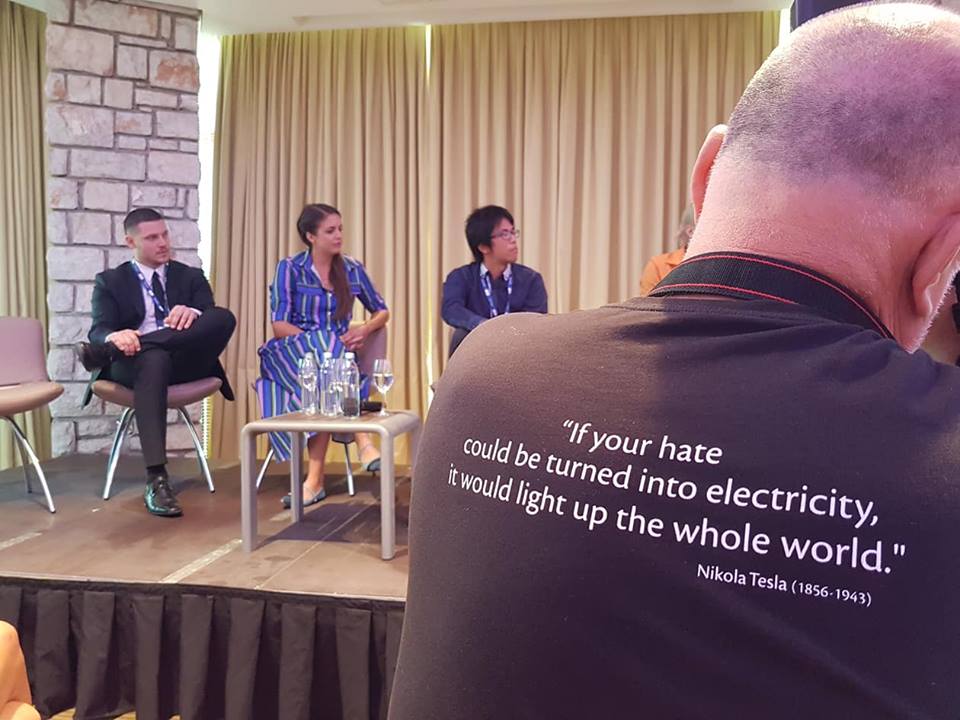
My favourite Nikola Tesla quote aside, there was plenty of interest in Hotel Amfora, which offers the premier conferencing facilities on Hvar. We will be looking at some of the content and lessons learned from some of the panels in subsequent articles.
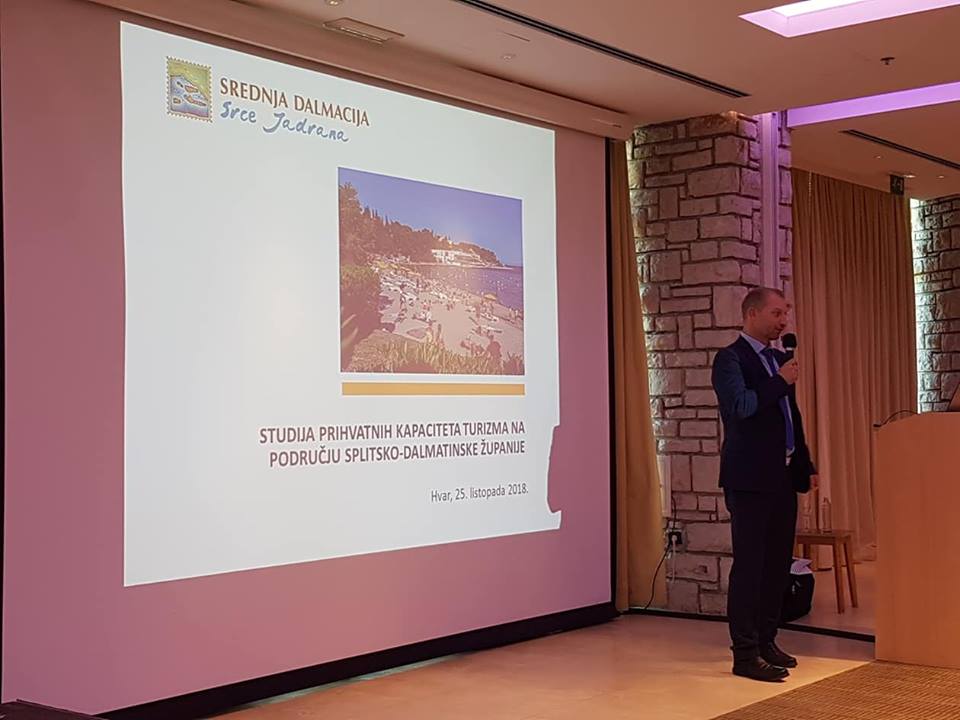
Among the most thought-provoking was a presentation from Joska Stella, Director of the Central Dalmatia Tourist Board, on a feasibility study on how to manage the surge in tourism numbers. The conclusions and findings were fascinating. More soon.
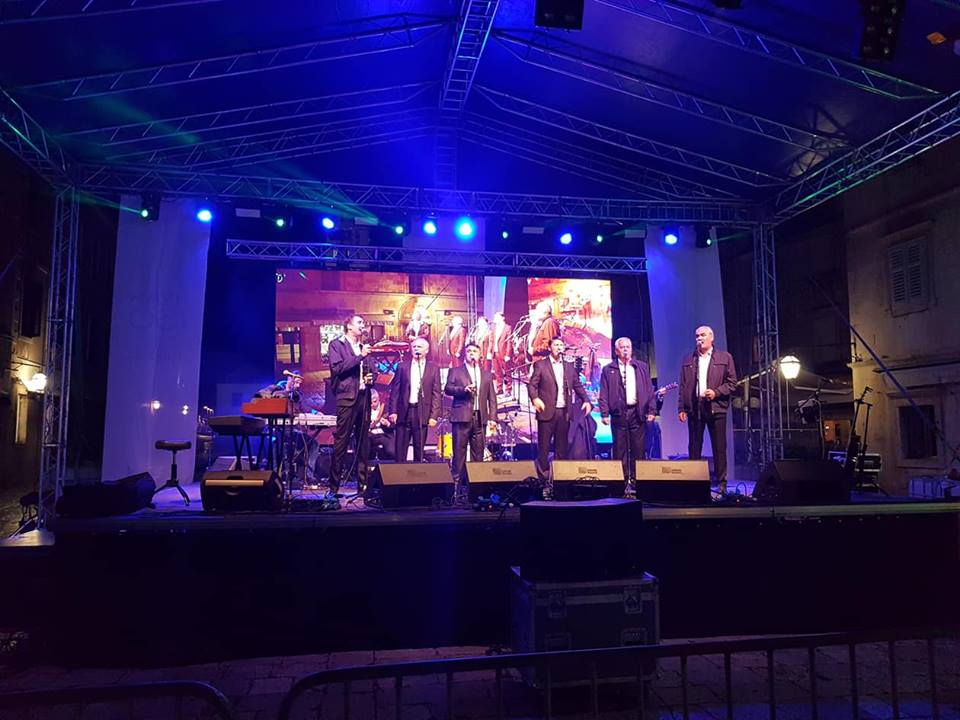
Hvar continued to shine, and the final evening highlight after dinner was a spellbinding concert by Klapa Intrade from Zadar on the main square. Although I quite like klapa on occasion, I had never heard anything like these guys - they were sensational. I felt a little self-conscious taking my beer onto the main square, having written extensively about the fines promised by Hvar Mayor Riki Novak for drinking in the street, but I was in good company. It was a truly fine evening with plenty of crowd engagement.
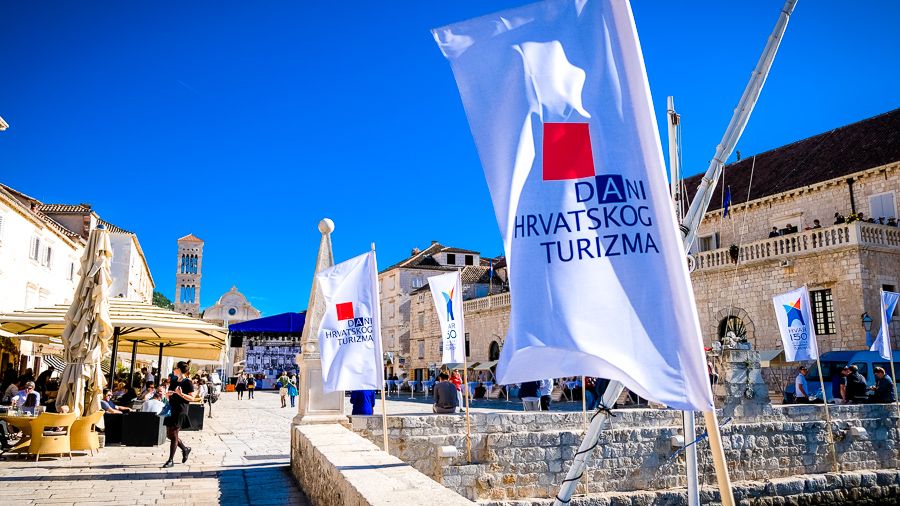
48 hours in Hvar Town in October, and I had fallen in love with it. Again. Visit Hvar in October - it is a truly delightful experience.
Special mention to Suncani Hvar Hotels for the conferencing and catering facilities, as well the accommodation for many of the delegates, of course. A strong hotel chain working in tandem with the tourism authorities is a powerful combination, and the future of shoulder season Hvar looks very bright indeed. To learn more about Suncani, click here.
Follow all the news about Days of Croatian Tourism on the dedicated TCN page.
Days of Croatian Tourism Start with Awards Presentation
The two-day Days of Croatian Tourism event traditionally marks the end of the main season.
Inland Dalmatia Named Best Rural Tourism Destination in Croatia!
An incredible achievement for the inland Dalmatia region!
Martinis Marchi Marina on Šolta Wins Best Small Marina in Croatia!
Martinis Marchi was awarded at the Days of Croatian Tourism currently taking place on Hvar.
Additional Ferries and Catamarans for Days of Croatian Tourism on Hvar: Full Schedule Here
New Name and Look for Historic Palace Hotel in Hvar
The hotel will have 5 stars and will be the first heritage hotel on Hvar.


